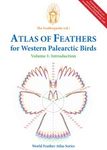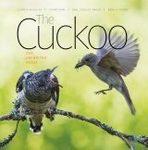"These two, slim A4 volumes are excellently illustrated practical manuals. Domestic birds contribute by far the majority of bones found in archaeological sites, and the quick efficient recognition of these is crucial. The first volume offers dichotomous keys for the major bones of the bird skeleton which eliminate other orders / species and steer one towards identification of the orders (Anseriformes, Galliformes, Columbiformes) that include domestic members. The two ends of each bone are treated separately, so there are 17 separate keys in the first volume (there is only the glenoid end for the scapula). The second concentrates on Galliformes (Meleagris, Numida and Pavo, as well as Gallus) and Columbiformes, on the basis that Anseriformes are already well covered by published manuals (though also acknowledging that the range of species and their overlap in size and morphology makes dichotomous keys almost impossible to devise). Again, the two ends of each major bone are treated separately, so there are likewise 17 keys for Galliformes, and a similar number for pigeons. However, as there are fewer species of the latter, they are treated more concisely.
Each dichotomy is illustrated by monochrome photographs, at variable scales, which detail the features being compared. There are also full-size colour photographs of the bones that highlight the same features. Much larger and smaller species are mostly keyed out (so eliminated from further consideration) on size. This criterion is also sometimes used within the groups, but the considerable range in size of, particularly, the domestic fowl Gallus gallus f. domestica and pigeon Columba livia f. domestica, is allowed by including them, if necessary, in both sides of the dichotomy. Both volumes have CDs that duplicate the colour plates. These plates illustrate members of several other orders, in the process, as it were, of eliminating them; however, the identification to other orders is beyond the intention of the first volume, and a caution is offered against too readily assuming their reliability.
Critical judgement of the value of these books will require their extensive use in practical situations. However, the well-annotated photographs, the use of dichotomous keys, and the extensive coverage of bones and bird species provide an excellent and relatively pain-free introduction to this field. The careful introductions to the morphological details that feature in the keys will be valuable to, and especially useful for, anyone beginning this sort of study. The authors caution that their keys are no substitute for a reference collection of recent skeletons, but even bird archaeologists much more experienced than I, will find these keys provide a valuable formal constraint to identification. A run-through with a few specimens from my own reference collection quickly led me to the correct identifications, and improved my (shaky) understanding of detailed anatomy at the same time. I also came to appreciate the value of being able to reach identifications from both sides of some of the
dichotomies."
- D. W. Yalden, Ibis 152 (2010), p. 851






























![Die Familie Parasitidae Oudemans, 1901 (Acarina, Mesostigmata) [The Family Parasitidae Ondemans, 1901 (Acarina, Mesostigmata)]](http://mediacdn.nhbs.com/jackets/jackets_resizer_medium/20/201089.jpg?height=150&width=108)







